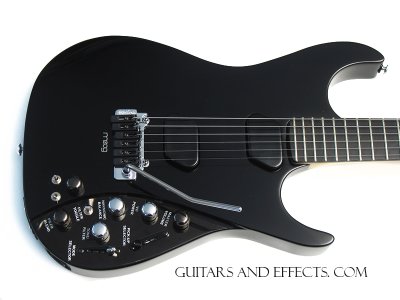DrNewcenstein
He Did the Monster Mash
Years upon years ago I had a Cort Effector with an on-board effects system. It sucked.
Over the years I've had guitars with on-board preamps and treble boosts with sweepable range you could monkey into acting like a wah, but they were largely useless.
I know you can get big honkin' circuit boards that do one thing, typically some sort of clean boost or passive-to-active simulation or compressor, but has anyone done a complete series of on-board effects - chorus/flange, delay/reverb, actual distortion and/or OD, phaser/autowah - that was modular enough and small enough that you could put it inside a Les Paul control cavity easily?
I'm thinking this could be done, especially with the miniaturization tech we have today. A complete line of floor-pedal-quality effects each no bigger than a typical USB flash drive. With a master inline slot connector or connector array, the order in which you put each effect stick is the pedal chain. The effect strip runs parallel to the guitar's dry output, and you can blend it as much as you like.
Of course you'd still need to add knobs and buttons and switches to the body, unless it was controlled by an app, in which case you may as well use an iRig and Amplitube, but then you still need to floor pedals to turn FX on/off, so you may as well use pedals or a rack with a controller.
Over the years I've had guitars with on-board preamps and treble boosts with sweepable range you could monkey into acting like a wah, but they were largely useless.
I know you can get big honkin' circuit boards that do one thing, typically some sort of clean boost or passive-to-active simulation or compressor, but has anyone done a complete series of on-board effects - chorus/flange, delay/reverb, actual distortion and/or OD, phaser/autowah - that was modular enough and small enough that you could put it inside a Les Paul control cavity easily?
I'm thinking this could be done, especially with the miniaturization tech we have today. A complete line of floor-pedal-quality effects each no bigger than a typical USB flash drive. With a master inline slot connector or connector array, the order in which you put each effect stick is the pedal chain. The effect strip runs parallel to the guitar's dry output, and you can blend it as much as you like.
Of course you'd still need to add knobs and buttons and switches to the body, unless it was controlled by an app, in which case you may as well use an iRig and Amplitube, but then you still need to floor pedals to turn FX on/off, so you may as well use pedals or a rack with a controller.


